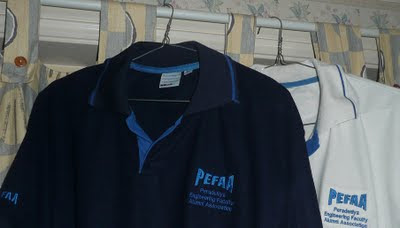
By
Rasika Suriyaarachchi [E/81/214]
PART I: The beginning
It has been a whopping twenty five years since we, the E Eighty One’rs, bid farewell to the picturesque surroundings of the mighty Hanthana valley, the vast array of buildings with fine architectural features, lush green parks where majestic trees covered with flowering vines stood firm, foot paths running underneath thick tree canopies and the all the fun that came as a packaged deal named “the University Life”. Other than for a few of us who make their living by still being a part of the same old merry-go-around, for the vast majority of us, our days at Peradeniya, the University Life, is just a fading memory.
Twenty five years is a long time. Long enough to find a job, get few promotions and earn enough dough to build a place to live. Long enough to get married, raise a family together and even send your kids off to university. Long enough to realise the errors of judgement you made, memorise the lessons learnt and seek retribution for injustice.
It is time to reflect; time to reminisce; and time to reveal it all.
On the 50th anniversary of the faculty of engineering in year 2000, a publication titled “Memories of an Engineering Faculty” was produced. The article I contributed to this volume, on invitation, consisted of many personal experiences written elevated to a level fit for general consumption. What I am doing tonight is not an attempt to tell the same story in a different perspective at all, but this is rather a humble endeavour to document a different set of events altogether. In any case, I will make it sure
that the article I authored ten years ago is well circulated electronically by the time this current essay
is published for wider readership.
For an 18 year old from a Colombo suburb, making the decision to opt for Peradeniya Engineering Faculty over the obvious choice of Moratuwa was like deciding to swim upstream, literary. The peer pressure with thirty odd fellow students from your school making the alternate choice, the inconvenience of long travel in the weekends, the extra financial burden etc., did not help at all. But for me, the most courageous thing to do was to brush away the suggestions from the sceptics that the academic staff at the Peradeniya Engineering faculty were not humane at all and are deliberately failing the students in their hundreds year after year at final examinations. However, my strong desire to spend four years of my early adulthood in the legendary foothills of Hanthana helped me to take a firm decision against the trend.
Unlike in Australia where Engineering studies at tertiary level is in the bottom of the scale when it comes to the demand form potential students, it is the top-most, the creamiest, layer of the A/L mathematics stream that flows into the Engineering faculties in Sri Lanka. We had the all island best and a few district bests among the 250 of us at Peradeniya. Even though there was a dispersion range of 200 marks among us, as far as the A/L results are concerned, there was no doubt that each and every one us had excellent mathematical skills. Yet, most of the students were faring very badly in mathematics and all subjects where mathematical analysis was a part.
Over 600 students sitting the end of year examinations for some subjects in first and second years should tell a tale in any language – given that the annual intake was just 250.
However, it seemed that those who were in-charge did not understand the gravity of this situation at all. It has only been a few years since the faculty had been seemingly forced by the government to accommodate an intake of 250 students up from a previous 150 or so. There was this sickening joke among the students about one of the professors who has reportedly said that whatever the size of the intake, he and his colleagues will make sure that the output remains at the same level. As many as 60 students, a figure close to 25% of the intake, were failing to scrape through the first year and ending up spending five years to complete this otherwise four year degree.
Out of 250 students in our E/81 batch, only 90 got through all eight subjects at the first attempt. That was a miserable situation, to say the least. I am sure the majority of those remaining 160 students experienced failure for the first time in their lives. After all, this is a group that had excelled their studies just less than two years ago.
Soon, there was a repeat examination for the first year students and even after that second attempt, about 30 students failed to get through the minimum requirement of five subjects. Yet, there were no visible signs of any panic or attempts to address this grave situation at all in the faculty. If there were any plans being drawn up by the faculty members, we never saw the implementation of those during our four year stay.
READ
Part II: HHJ Keerthisena compares Peradeniya with Moratuwa
 Continued from PART IV: Life after E-fac
Continued from PART IV: Life after E-fac



